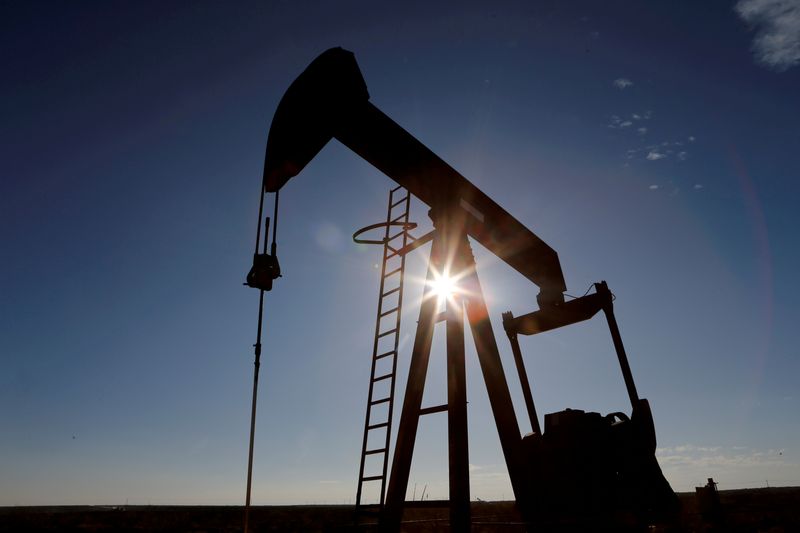By Alex Lawler, Stephanie Kelly and Muyu Xu
LONDON/NEW YORK/SINGAPORE (Reuters) - Crude oil prices in much of the world's physical markets have started the year with a rally amid signs of more buying from China after it eased COVID-19 restrictions and concern that sanctions on Russia could tighten supply.
China, the world's biggest crude importer, started rolling back its zero-COVID policy in early December in a development the International Energy Agency (IEA) expects will boost global oil demand this year to a record high.
At the same time, a European Union ban on Russian crude imports which took effect in December will be broadened to include refined fuels from Feb. 5, and is expected to further tighten supply from Russia.
The rally in physical crude suggests underlying support for the gains seen this year in crude futures markets. Global futures benchmark Brent crude rose as high as $88.66 a barrel on Monday, the highest since December.
"It seems clear that physical differentials have gone up in January and I expect them to do so further in February. There is good, healthy demand," a London-based trader said.
"It's been a fast turnaround from December," he added. "I'm sure Russian supply uncertainty is also part of it."
In the North Sea, Forties crude has risen to a premium of 30 cents to the global physical benchmark, dated Brent, from a discount of 92 cents at the start of the year. Forties is the crude which most often sets the value of dated Brent.
In West Africa, offers for light, sweet Nigerian oil have risen, with sellers of Nigerian Qua Iboe looking for around dated Brent plus $3.00 a barrel, up by more than $1 from levels in December, although sold prices have fallen short of the offers.
Values for Angolan cargoes, which weakened in December to the lowest in more than two years on thin demand, have also rallied in January. Girassol crude has risen to around parity with dated from minus 80 cents in December, traders said.
"There is better Eastern demand for sure with Western demand already improving in the last month or so," a trader of Angolan crude said.
U.S. RALLY
In the United States, cash crude grades have largely firmed over the last week and a half as strong demand for exports, along with higher domestic consumption, pulled prices up, dealers said.
Mars Sour, a key U.S. sour crude grade, gained to trade at a $2.50 discount to U.S. crude futures last week, the highest it has been since Nov. 17.
Meanwhile, WTI Midland, a light, sweet crude, traded as high as a $1.70 premium to U.S. futures last week, its strongest since Nov. 8.
The discount of U.S. crude future discount to international benchmark Brent widened last week to as much as $6.00 a barrel, the widest discount since Dec. 1.
The wider spread between the two benchmarks makes U.S.-linked grades more attractive to foreign buyers and tends to push demand for U.S. crudes higher.
Mizuho analyst Robert Yawger said in a report on Friday WTI's discount to Brent is "getting close to the export up- import down sweet spot" of $6.00 or lower, which is "good for crude oil bulls".
U.S. crude exports in late October touched a weekly record of 5.1 million barrels per day (bpd, at a time when WTI traded at a nearly $9 discount to Brent.
CHINA BUYING
In contrast, premiums for Middle Eastern crude are still weak this month, around the same level as the last trading cycle, weighed down by ample supply.
But China is buying more in the physical market. China's Unipec this month bought at least 17 cargoes of Upper Zakum crude, about three Very Large Crude Carriers (VLCCs) of U.S. crude plus at least five VLCCs of Brazilian crude for March delivery.
Unipec is the trading arm of Asia's largest state-backed refiner Sinopec. Traders said if shipments for early April delivery are included, Unipec might have bought 10 VLCCs of Brazilian crude, about double the five per month the company used to buy.
Each VLCC can carry up to 2 million barrels of oil.
It is not clear how much Upper Zakum Unipec bought last month, although a Singapore-based trader said: "I didn't see them buy that much in the past months."
Cheaper freight rates and the narrowest spread between Brent and Dubai prices in a year are encouraging Asian buyers to seek cargoes from the Americas.

"Structure and freight rates have come off, so the oil is cheaper than last month on a delivery basis," another Singapore-based trader said.
"This could signal that China is replenishing inventory and may step up operations from March."